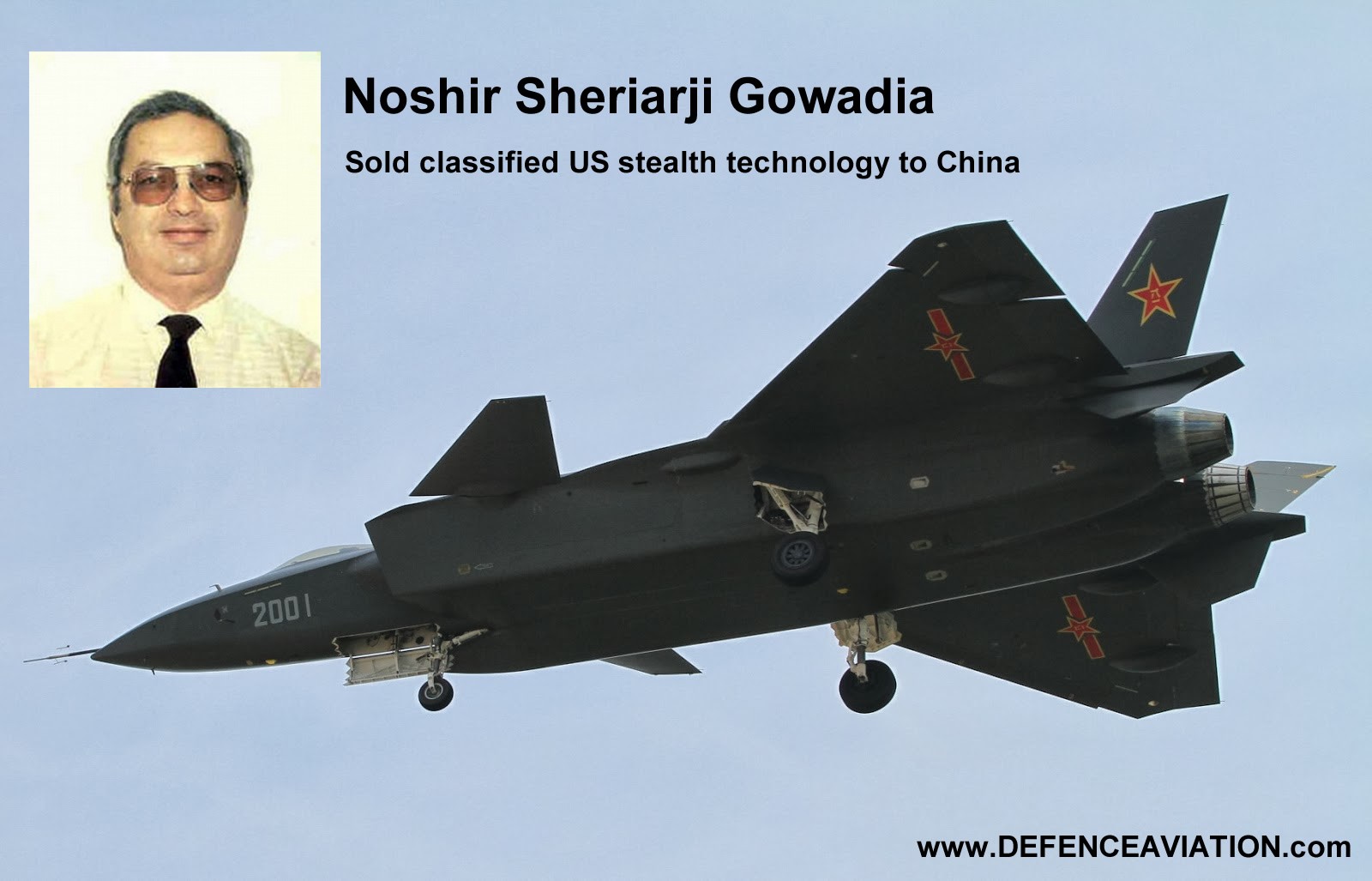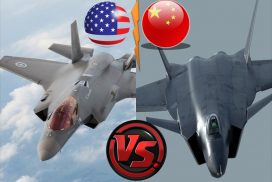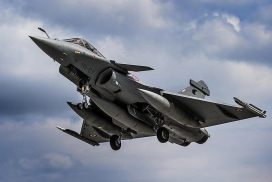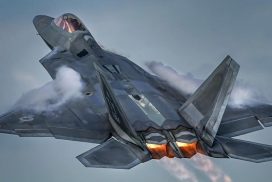First, there were lots of news and rumors that China is probably developing a secret stealth bomber like B-2 Spirit and then came the rumors that China might be into a development of stealth fighters in the class of F-22 Raptor. Later, on December 2010, the world sees the first pictures of what seemed to be a Chinese stealth fighter and by January 2011 it was confirmed that China was indeed developing and testing stealth fighters.
The world was confused as in how China a country which has been notorious for reverse engineering fighter planes of Russian origin could have indigenously developed a stealth fighter with record time and very little research & development. And now on February 2012 we have confirmed the news that China is developing the Intermediate stealth fighter Shenyang J-16 code-named Silent Flanker.
Thanks to Noshir Sheriarji Gowadia who I refer to as the “Father of Chinese stealth technology” I believe China was able to develop such advanced technologies in such a short time. Noshir Gowadia was born in Mumbai, India emigrated to the United States and is now a naturalized U.S. citizen. He worked for Northrop from 1968 to 1986, as a design engineer, Gowadia was the principal designers of the B-2 Spirit stealth bomber, who conceptually designed the B-2 Bomber’s entire propulsion system and called himself the “father of the technology that protects the B-2 stealth bomber from heat-seeking missiles.” Besides the infrared suppression systems of B-2 Spirit it is unclear what other technologies of the bomber Gowadia had access to. In 1999, he founded N.S. Gowadia, Inc, which is described as providing “research and development, engineering services, technical consulting and any business related thereto.”
In October 2005, Noshir Gowadia who worked for Northrop for 18 years was accused of disclosing the stealth bomber’s infrared-suppression secrets to representatives from eight foreign governments. He was charged with one count of willfully communicating national defense information to a person not entitled to receive it, which falls under federal espionage statutes. Several classified documents from the engineer’s days at Northrop and when he was a contract engineer in the 1990s at the Los Alamos National Laboratory in New Mexico were found in his $ 4 Million house in Hawai. He confessed of sharing classified information “both verbally and in papers, computer presentations, letters and other methods, to establish the technological credibility with the potential customers for future business.” Gowadia was also charged with helping to design stealth technology for Chinese missiles, and with money laundering.
From 2003 to 2005 Noshir Gowadia made six trips to China, conspiring to conceal some of his visits by getting border agents to leave immigration stamps off his passport. The city of his interest was Chengdu, the same city home to the Chengdu Aircraft Industry Group and also home to the company that developed Chengdu J-20 stealth fighter. He was also accused of attempting to sell classified stealth technology to the Swiss government and to businesses in Israel and Germany. On several other occasions, Gowadia provided “extensive amounts of classified information” to individuals in a third unspecified country while teaching a course on “low observable technology.” In 1999, Gowadia taught a course to foreigners in a second unspecified country, including information deemed “secret” that he had access to while working for Northrop and as a subcontractor for Los Alamos. In 2002, Gowadia faxed a proposal to develop infrared-suppression technology on military aircraft to a representative in an unspecified foreign country. The information included in the document was classified at the “top secret” level and made specific mention of the classified defense system in the United States.
For years Nohsir Gowadia marketed himself as the “father of the technology that protects the B-2 stealth bomber from heat-seeking missiles.” Attracting many potential international customers, Gowadia “has marketed and disclosed the United States military technology secrets related to the B-2 to foreign governments in order to ‘assist’ them in obtaining a higher level of military technology,” says FBI Special Agent Thatcher Mohajerin. Gowadia’s engineering contract business, N.S. Gowadia Inc., made nearly $750,000 between 1999 and 2003. But prosecutors believe Gowadia’s actual income was much higher. The investigation, showed Gowadia “likely” maintains several offshore bank accounts. Assistant U.S. Attorney Ken Sorenson cited the sheer volume of discovery in the case, which includes information that has yet to be formally classified by the Air Force and a substantial amount of evidence from foreign countries involved.
On January, 2011, he was sentenced to 32 years in prison, the same month Chengdu J-20 Chinese stealth fighter went public. Gowadia is currently incarcerated in the ADX Florence, with a release date of September 11, 2033. Thanks to him China now has three stealth projects in development.
Shenyang J-16 Silent Flanker Chinese Intermediate Stealth Fighter
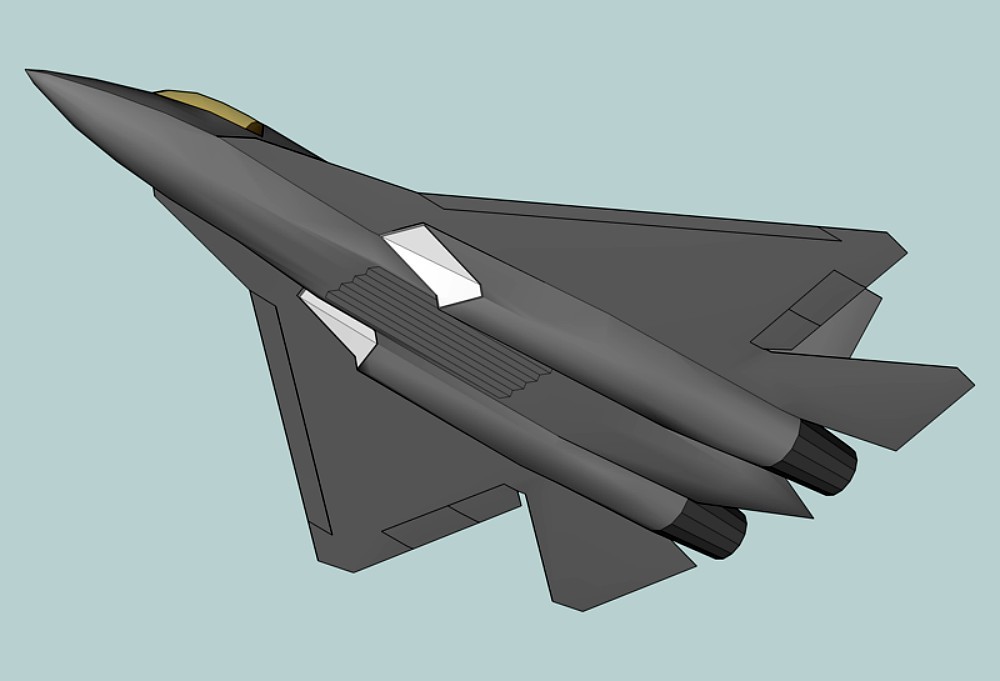 China is developing a heavily modified variant of the J-11B code named J-16 Silent Flanker. It features stealth design like internal weapons bays, stealth-optimized engine intakes, and canted vertical fins. It’s the race of the stealth fighters, the United States, Russia, India, Japan, India, China everyone seems to want to have a bite at it. China is trying hard to modernize and fill in their need for fourth generation fighters, meanwhile working very hard every way possible to develop it’s Fifth generation fighter capability. READ MORE.
China is developing a heavily modified variant of the J-11B code named J-16 Silent Flanker. It features stealth design like internal weapons bays, stealth-optimized engine intakes, and canted vertical fins. It’s the race of the stealth fighters, the United States, Russia, India, Japan, India, China everyone seems to want to have a bite at it. China is trying hard to modernize and fill in their need for fourth generation fighters, meanwhile working very hard every way possible to develop it’s Fifth generation fighter capability. READ MORE.
Chengdu J-20 China’s first stealth fighter takes to the skies
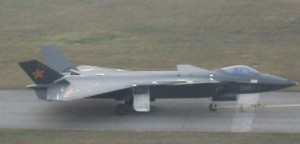 Chinese aviation fans say they have been snapping pics of the jet during taxi tests. The J-20 prototype was photographed when it was preparing for high-speed taxing trial at the CAC airfield on December 22, 2010. The prototype features a pair of all-moving tail-fins and ventral stabilizing fins. It also features F-22 style air intakes but with DSI bumps installed at the upper corners, as well as a one-piece canopy. READ MORE
Chinese aviation fans say they have been snapping pics of the jet during taxi tests. The J-20 prototype was photographed when it was preparing for high-speed taxing trial at the CAC airfield on December 22, 2010. The prototype features a pair of all-moving tail-fins and ventral stabilizing fins. It also features F-22 style air intakes but with DSI bumps installed at the upper corners, as well as a one-piece canopy. READ MORE
.
Xian H-8 Chinese Stealth bomber
The H-8 bomber was a Chinese military aircraft that was a possible successor to the Xian H-6 twin-engine jet bomber. The prototype aircraft was reported to be an enlarged version of the H-6 with under-wing engines, but that the project was canceled in the early 1970s before the bomber went into production. The Chinese military has a stealth bomber called Xian H-8 that has 4 Ws-10A engines derived from Russian and US technology. READ MORE

